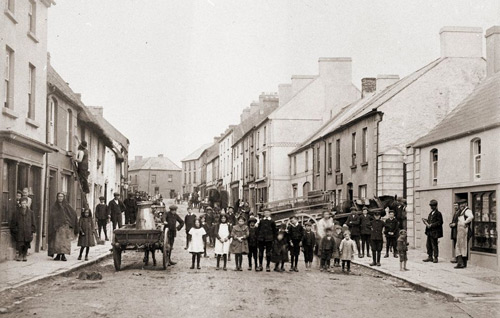“Little Miss Muffet, she sat on her tuffet, eating her curds and whey.
Along came a spider, who sat down beside her, and frightened Miss Muffet away.
As promised on April 21st, 2024, a 269 year old recipe, adapted from the manuscript book of Catherine Hughes, Killenaule, Thurles, Co. Tipperary, dated 1755, and published by Mrs Theodora FitzGibbon, in her book ‘A Taste Of Ireland’, published 56 years ago, in 1968, is published hereunder.

Cottage cheese, once considered to be the least desirable item to pick up in your supermarket’s dairy aisle, is now being heralded as one of the best items to put in your shopping basket.
Cottage cheese, as the name implies, is a type of cheese made up of curds and whey liquid (yes, the very thing Miss Muffet was eating before being rudely interrupted by that spider). It hasn’t always been celebrated for it lumpy wet consistency, but health enthusiasts highlight that it is a good source of calcium. More importantly, cottage cheese is naturally very high in protein, with on average, a whopping 11g of protein per 100g. Protein is essential for human growth and repair and for helping us to maintain our muscle as we get older.
A quick internet search will yield hundreds of cottage cheese recipes including pancakes, breads and desserts, but here’s a recipe for cottage cheese that is 269 years old.
Curds (Grut in Irish) formed an extensive part of the diet of the ancient Irish. They are mentioned in the earliest documented sources. Various early cheeses were made from them; one cheese being ‘faiscre grotha’, (Irish meaning literally ‘pressed curd’).
The Reverend Richard Hopkins Ryland* in ‘The History, Topography and Antiquities of the County and City of Waterford’, dated 1824, says “Cheese made from skimmed milk and called ‘Mullahawn’ was formally an article of commerce in Waterford and was exported in large quantities…”
*Reverend Richard Hopkins Ryland was born in 1788, the descendant of 16th century Protestant planters who had settled in Dungarvan, Co Waterford. Generations of the family became ‘Church of Ireland’ ministers.
Rev. Ryland married Isabella Julia Fleury (latter nine years his junior), the daughter of the Rev. Archdeacon George Louis Fleury of Waterford in 1818; at St. Patrick’s Church, Waterford.
The couple had six sons and two daughters.
His best known historical work was ‘The History, Topography and Antiquities Of The County And City Of Waterford’, (published 1824), which was dedicated to the Duke of Devonshire, while he also published religious pamphlets.
He died in 1866, aged 78 years, followed by his wife Isabella Julia in 1873; aged 76 years, in South Kensington, Middlesex, England. The Tipperary ‘Clonmel Chronicle’ newspaper published her official ‘Death Notice’.
Pastry.
6 oz (6 heaped tablespoons) of flour.
3 oz (3 heat tablespoons) butter.
1 tablespoon sugar.
½ teaspoon salt.
Water.
Filling.
½ lb (2 cups) sweet curds or cottage cheese.
2 eggs, separated.
2 heaped tablespoons sugar (vanilla sugar if possible).
Grated peel and juice of half lemon.
1 tablespoons of butter.
For the topping.
1 egg and one tablespoon each of sugar, flour and melted butter.
First make the pastry by mixing the fat into the flower, sugar, and salt, to a firm pliable dough with a few tablespoons of water. Cool if possible before using. Make the filling by well mixing the curds with the sugar, soft butter, grated peel and juice of the lemon and the beaten egg yolks. Beat is well, then add the stiffly beaten egg whites. Roll out the pastry to fit a flan-tin, 7 in-8 inch across, line the tin with it and paint the bottom with beaten egg (this prevents the bottom pastry becoming heavy).
Put the filling into the pastry case, and, using the rest of the egg, mix it with the topping sugar, melted butter, and flour. Pour this evenly over the top. Bake in a moderate oven (350° F. electric; gas regulo 4) for 35 to 40 minutes, or until the top is golden brown.
Serve cold, but not chilled, cut into wedges.

Leave a Reply